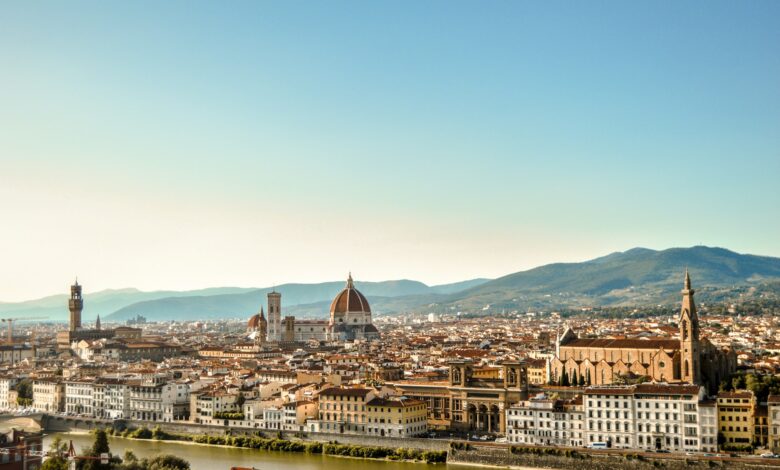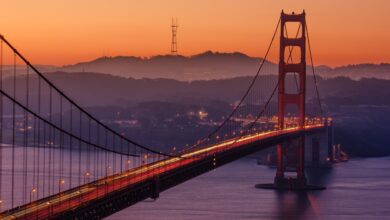
[ad_1]
Florence is a city steeped in artistic brilliance and cultural heritage. It is the birthplace of the Renaissance known for its extraordinary wealth of Renaissance masterpieces, it’s a pilgrimage site for art lovers worldwide. From magnificent sculptures to breathtaking frescoes, Florence’s galleries and museums are treasure troves showcasing the works of legendary artists like Leonardo da Vinci, Michelangelo, and Botticelli.
In this comprehensive guide, we’ll take you through Florence’s artistic landscape, uncovering some of the most iconic masterpieces and providing you with insights into the artists and their revolutionary contributions to art history.
The Accademia Gallery: Michelangelo’s David and Beyond
One of the best places to delve into the world of Renaissance art is at the Accademia Gallery. This is actually the shrine of Michelangelo’s masterpieces. Here, the star of the show is undoubtedly David, a colossal marble statue that stands as a symbol of human potential and artistic achievement.
David, sculpted by Michelangelo between 1501 and 1504, represents the biblical hero who defeated Goliath. The statue’s intricate details, from the veins on his hands to the determination in his gaze, showcase Michelangelo’s dedication to perfection.
As you stand before David, you can’t help but marvel at the artistic prowess that transformed a block of marble into a timeless symbol of strength and beauty.
Beyond David, the Accademia Gallery also houses other works by Michelangelo, including his unfinished sculptures known as the Prisoners or Slaves. These sculptures offer a glimpse into the artist’s creative process, with figures seemingly emerging from the stone.
Each piece carries an air of mystery, inviting you to contemplate the interplay between form and substance.
Bargello National Museum: A Sculpture Haven
One of the best places in Florence to visit as an art lover is the Bargello National Museum. Originally a medieval fortress, the Bargello now houses an impressive collection of sculptures, including works by Donatello, Michelangelo, and Cellini.
Donatello’s David, sculpted in the 1440s, is a revolutionary piece that marks the transition from Gothic to Renaissance art. The bronze statue, portraying David with a confident and relaxed stance, showcases Donatello’s innovative approach to form and expression.
Michelangelo’s Bacchus, displayed in the Bargello, provides you with a glimpse into the artist’s exploration of classical themes. The statue, depicting the Roman god of wine, exudes a sense of youthful abandon and showcases Michelangelo’s ability to breathe life into stone.
The Duomo: Florence’s Architectural Marvel
There is also the amazing Florence Cathedral, or Duomo, which is an iconic dome designed by Filippo Brunelleschi, that stands as a testament to Renaissance innovation and engineering.
Climbing to the top of the Duomo will not only provide you with panoramic views of Florence but also a closer look at Giorgio Vasari and Federico Zuccari’s Last Judgment fresco on the dome’s interior. The fresco, completed in the late 16th century, depicts scenes from the Bible and showcases the artists’ skill in capturing movement and emotion.
The Uffizi Gallery: A Symphony of Renaissance Brilliance
The Uffizi Gallery is another architectural gem and a treasure trove of masterpieces that was commissioned by Cosimo I de’ Medici in 1560. It is one of the oldest and most famous art museums in the world.
The Birth of Venus by Sandro Botticelli is arguably the most iconic piece in the Uffizi. Painted in the mid-1480s, this masterpiece captures the goddess Venus emerging from the sea, embodying grace and beauty.
Here you can also marvel at the genius works of Leonardo da Vinci including the Annunciation painting which is a depiction of the Archangel Gabriel announcing to the Virgin Mary that she will conceive the Son of God, exemplifies da Vinci’s mastery of light and shadow.
A visit to the Uffizi is also incomplete without witnessing the exquisite works of Michelangelo. The Holy Family, known as the Doni Tondo, showcases Michelangelo’s unparalleled skill in portraying human anatomy.
The circular composition and the use of chiaroscuro (light and shadow) reveal the artist’s influence on the High Renaissance.
Remember that the Uffizi Gallery is a major attraction, and during peak hours, the regular lines can be quite long. You are better off getting skip-the-line Uffizi gallery tickets that allow you to bypass these queues, saving you valuable time and allowing you to make the most of your visit.
Palazzo Pitti: A Royal Residence and Art Haven
Leaving the galleries behind, make sure that you visit the Palazzo Pitti, a grand Renaissance palace that served as the residence of the powerful Medici family. Today, the palace houses several museums, including the Palatine Gallery, the Gallery of Modern Art, and the Costume Gallery.
The Palatine Gallery, adorned with elaborate frescoes and stucco decorations, is a treasure trove of Renaissance paintings. Raphael’s Madonna of the Goldfinch stands out among the collection, portraying the Virgin Mary with the infant Jesus and John the Baptist. You will be amazed by the use of soft colors and tender expressions that epitomizes Raphael’s ability to convey serenity and beauty.
Moreover, Titian’s Venus of Urbino, displayed in the same gallery, is a sensual masterpiece that challenges traditional depictions of the female nude. The reclining Venus gazes directly at the viewer, creating a sense of intimacy and inviting contemplation on love and desire. Titian’s use of color and light adds a layer of warmth to the painting, making it a standout piece in the Palatine Gallery.
Medici Chapels: A Royal Mausoleum
The Medici Chapels is a monumental complex that was built to honor the Medici family. Designed by Michelangelo, the New Sacristy within the Chapels houses some of the artist’s most significant sculptures.
This includes the Medici Tombs which features sculptures of Lorenzo de’ Medici and his brother Giuliano that epitomize Michelangelo’s ability to convey emotional depth through marble. Also, there are the allegorical figures which represent Dawn and Dusk, Day and Night and further highlights the artist’s mastery in capturing the human experience.
Ponte Vecchio: The Charming Artery of Artisans
As you continue with your art-filled journey, don’t forget to explore the charm of Ponte Vecchio. This historic bridge, adorned with shops and jewelry stores, has been a symbol of Florence for centuries.
The shops on Ponte Vecchio have been home to artisans and craftsmen since medieval times, offering a unique blend of history, art, and commerce.
Walking along Ponte Vecchio, you’ll find jewelers and goldsmiths continuing age-old traditions. Additionally, it is important to know that the bridge not only serves as a living testament to Florence’s rich artistic and artisanal heritage, it also connects the two banks of the Arno River.
Final Remarks
Florence stands as a testament to the transformative power of the Renaissance, a period of unparalleled creativity and innovation in the history of art. Through its wealth of masterpieces, the city offers a glimpse into the minds of visionary artists who revolutionized the way we perceive the world.
Whether you’re a seasoned art enthusiast or a curious traveler, exploring Florence’s Renaissance treasures is an enriching experience that promises to inspire and awe. So, immerse yourself in the beauty of Florence’s artistic heritage and let its masterpieces ignite your imagination and appreciation for the timeless wonders of the Renaissance.
[ad_2]
Source link






